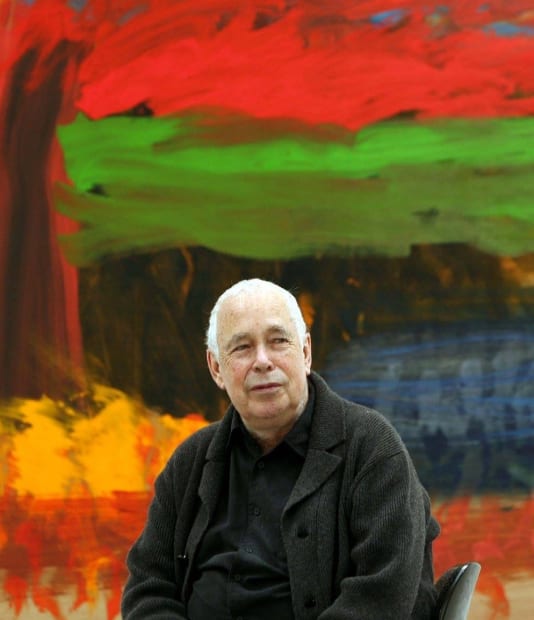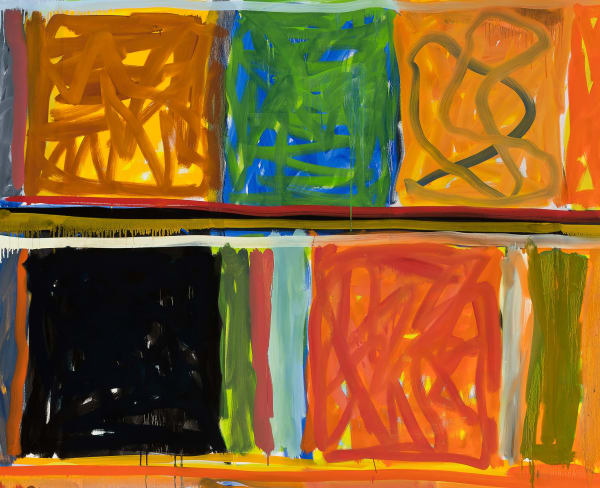-

-
"I am a representational painter but not a painter of appearances. I paint representational pictures of emotional situations."
– Howard Hodgkin
Howard Hodgkin (1932–2017) is widely regarded as one of the world’s greatest painters and has occupied a central place in contemporary art for over half a century.
The work of Howard Hodgkin linked gesture and color by pushing the boundaries of painting, often literally – through strokes that went beyond the edges of the frame. Embracing time as a compositional element, his work is a testament to his immersion in the intangibility of feelings, and his seemingly spontaneous, dramatic brushstrokes provide an exploration into the expressive nature of paint itself.
-
-
The "Undergrowth" (1998–2003) comes at a time when Howard Hodgkin created the largest works in his significant body of art, introducing a new note to his subjects. The work features a vibrant composition of gestural brushstrokes and richly layered textures, depicting a tangled forest undergrowth. The colors blend and bleed into each other, creating a sense of movement and dynamism. Painted frames enhance the suggestive effect of his pulsating colours.
-
-
 © Rebecca Reid/Eyevine
© Rebecca Reid/Eyevine -
Howard Hodgkin's paintings and prints have been the subject of major exhibitions all over the world. His first retrospective was curated by Nicholas Serota at the Museum of Modern Art, Oxford, in 1976. In 1995 The Metropolitan Museum of Art, New York, presented a major retrospective which toured to Europe.
-
 Howard Hodgkin: Painting India at The Hepworth Wakefield, 2017Photo by Stuart Whipps
Howard Hodgkin: Painting India at The Hepworth Wakefield, 2017Photo by Stuart Whipps -
In addition to his work as a painter, printmaker, set and costume designer, Hodgkin was an avid collector. The undeniable and key source of inspiration in the artist's oeuvre was his love for India, a country he first visited in 1964 and returned to almost every year of his adult life, and his fascination for traditional Indian art: Indian paintings and drawings have been his lifelong passion. Howard Hodgkin’s collection of art comprised over 120 works, including Mughal Art, that are recognized as some of the finest examples of Indian art made between 1550 and 1850. In many of his paintings and drawings Hodgkin transcended his explosive celebrations of the country he loved and forged a new narrative, reminiscing over his thoughts, experiences and memories.
"I fell in love with Indian art when I was at school, thanks to the enterprising art master, Wilfrid Blunt. I longed to visit India, but only managed to do so in my early thirties. It proved a revelation. It changed my way of thinking and, probably, the way I paint."
— Howard Hodgkin
-
-
Viewing Rooms
Viewing Room | Undergrowth by Howard Hodgkin
Past viewing_room






